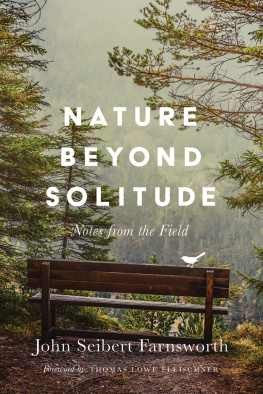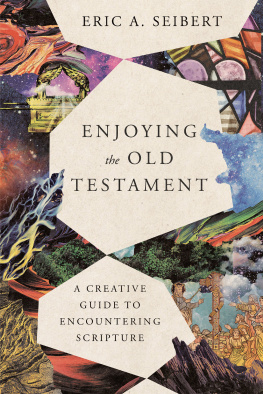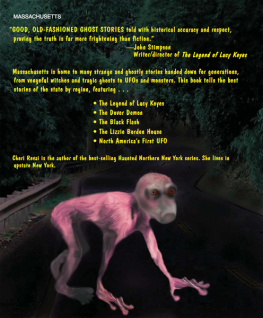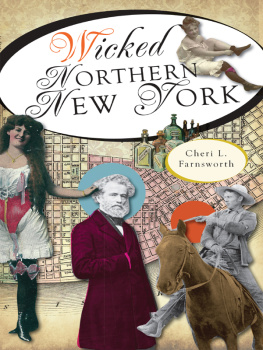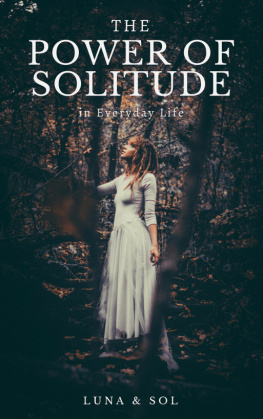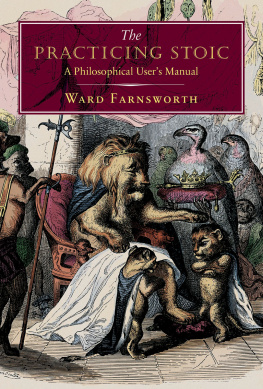John Seibert Farnsworth - Nature Beyond Solitude
Here you can read online John Seibert Farnsworth - Nature Beyond Solitude full text of the book (entire story) in english for free. Download pdf and epub, get meaning, cover and reviews about this ebook. year: 2019, genre: Art. Description of the work, (preface) as well as reviews are available. Best literature library LitArk.com created for fans of good reading and offers a wide selection of genres:
Romance novel
Science fiction
Adventure
Detective
Science
History
Home and family
Prose
Art
Politics
Computer
Non-fiction
Religion
Business
Children
Humor
Choose a favorite category and find really read worthwhile books. Enjoy immersion in the world of imagination, feel the emotions of the characters or learn something new for yourself, make an fascinating discovery.
- Book:Nature Beyond Solitude
- Author:
- Genre:
- Year:2019
- Rating:5 / 5
- Favourites:Add to favourites
- Your mark:
- 100
- 1
- 2
- 3
- 4
- 5
Nature Beyond Solitude: summary, description and annotation
We offer to read an annotation, description, summary or preface (depends on what the author of the book "Nature Beyond Solitude" wrote himself). If you haven't found the necessary information about the book — write in the comments, we will try to find it.
Nature Beyond Solitude — read online for free the complete book (whole text) full work
Below is the text of the book, divided by pages. System saving the place of the last page read, allows you to conveniently read the book "Nature Beyond Solitude" online for free, without having to search again every time where you left off. Put a bookmark, and you can go to the page where you finished reading at any time.
Font size:
Interval:
Bookmark:

Dedicated to Carol
The question is not what you look at, but what you see.
Henry David Thoreau, journal, August 5, 1851
Welcome to the New Golden Age
Several days of rain have saturated the hills a few miles above the sand terrace where I squat. The river is swollen over its banks, brown with sediment, carrying debris, spilling out of the granite gorge. Clouds stream past in an atmospheric river that promises to deliver snow to the mountains tonight. Even here, in the high desert, this afternoons wind has some bite.
I sit, paying attention to these simplest sightsclouds, sand grains, the color of water, direction of the wind. All this, part of the practice of attention we call natural history.
Natural history represents a practice of compassion, of feeling with. Too often, peopleeven those predisposed toward conservationlump all of non-human life into one amorphous bundle and label it Nature. This is good as far as it goes, but Nature hides at least as much as it illuminates. We tend to have our deepest compassion for individual beings, not for general categories. Mother Teresa took on mass hunger by looking each person in the eye as she lifted a ladle to their lips. Look into enough eyes and some sense of caring for humanity as a whole can emerge. The same goes for Naturewe need to watch an individual bird struggle to stay warm as it fluffs up against swirls of snow, or contemplate the purple gentian flower blooming an inch above the grassland of the high Andes, tenaciously clinging to the ground as a fierce wind knocks human observers to their knees. Watching a particular bird sing this redwing, from this fence postor a particular flower blossomingthis lavender jewel we call Penstemon helps us transcend the vague notion of Nature, or worse yet, the environment, and replaces it with texture, depth, and a realm of specificities. And in the process, awe suffuses our beingsfrom the simple recognition that something like a paradise tanager actually exists . If this expansion of consciousness is not a spiritual practice, I dont know what is.
Natural history, too, is ultimately political in that its practice shifts relationships of value and power. We fall in love; we change the way we relate to the world. We foster this falling-in-love in ourselves first. Then, love by love, friend by friend, story by story, we engage hundreds, thousands, millions of othersand we just might make a brand-new world.
The great jazz musicians Wayne Shorter and Herbie Hancock, in an open letter to the next generation of artists, concluded, Lastly, we hope that you live in a state of constant wonder. Natural history, more than anything Ive ever experienced, yields recurring states of wonderwonder in the familiar and the exotic, in the near and the far.
The author of the volume in your hands herein declares a new golden age of natural history. A message that I approve, and applaud. John Seibert Farnsworth has contributed to this golden moment by his own ongoing practice of attentionin this book he recounts his practice of encountering, and befriending, new landscapes. His temporary encampments at field sites along the west coast of North America provide glimpses into the world as it really is, uncluttered by media masks, and liberated from preconceptions.
Yet what is the value of these brief relationships with landscapes and the field stations that concentrate their essences? Why does it matter, one might ask, for a grown man to, basically, just wander around and look at things? Well, for starters, it makes you, the reader, laugh, and it makes you wonder. And humor, insight, and curiosity are all too rare in our world today.
There is no match, of course, for years-long, deep connection with a place. Where one comes to know the scent of specific shadows, the sequence and timingwhat an ecologist refers to as phenology of flowers: which colors blaze forth with which others, which autumn leaf transformations precede which others.
But theres another type of value, too. Like the medieval minstrels who roamed from site to site, carrying the news from one village to the next, collating and curating stories from eachJohn Farnsworths travels between field stations serve this ancient function. His observations become tales that enliven campfires, stimulate conversations, prompt listeners to lose themselves, to ponder, and to wonder. He has taken up residencytemporarily, but long enough to peel away storiesand then moved on, building a bank of stories to share with us all.
Listen to these songs. Let the music lift you into your own stories, remind you of your own special places. Sit back and bask in these words. Let the narrator, this big bear of a man, show you five ways to befriend a new place. This is the work of the world, and hes a fine guide.
T HOMAS L OWE F LEISCHNER
Books on nature seldom mention wind; they are written behind stoves.
A LDO L EOPOLD , A Sand County Almanac , 1949
Theres just enough left of the sundowner breeze to keep the bugs away.
I sit here tonight, alone at a picnic table near the vacant dorms of a remote field station in the Channel Islands, watching something Ive never observed before. A female acorn woodpecker is taking a dust bath in a shallow depression where the soil seems especially powdery, a place where birds have apparently done this before. She hunkers down low, dips her head first, shaking her bill side to side to stir up the dust, then arches her back, flinging dust toward her tail while she flops to her belly and begins flapping her wings as if drowning. Ive seen quail do this, and house sparrows, and Ive heard that this is how many birds deal with ectoparasites, but its the first time Ive watched a woodpecker bathe.
I am tempted to view this scene as comical. Field guides tend to describe the acorn woodpeckers face as clownish or clown-like, and when birds thus perceived lie on their bellies and flap in the dirt, its hard to ascribe them dignity. But this woodpecker seems quite earnest about her bath, so I observe the ritual with appropriate solemnity.
Finally bursting from the dust, the woodpecker seems heavy, as if gaining altitude is a struggle. Straight up she flies, landing vertically on the broad trunk of a eucalyptus tree immediately above the bathing site. Her white belly is still the color of the dust. Briefly she seems to rest, propped up by stiff tail feathers, and then she flies over to an adjacent tree, another stately eucalyptus, still climbing steeply. The woodpecker stops momentarily at a cavity entrance, and then disappears inside. I imagine that she tracked a great deal of dust in with her.
I enjoy writing in situ , on site. This way Im not only writing about nature, Im writing from nature. Right now Im writing at dusk, from dusk, during a drought, from just beyond the canopy drip line of a dry, dusky eucalyptus that shelters a dusty bird that has just bathed.
It was not my intent, when I first sat down at this picnic table, to describe a woodpeckers bath. Im not even certain I intended to write. Its more accurate to say that I was prepared to write, with notebook and pen at the ready, should anything seem remarkable. There are also binoculars on hand, and a glass of wine.
The breeze tails off for the night, and a mosquito buzzes my ear. I realize that Im having to deal with my own little ectoparasite at the moment. While this realization connects me to the woodpecker now bedded down in its cavity, I assuredly wont be indulging in a dust bath anytime soon. My better options seem to be to slather myself with repellant, or to go inside.
I go inside.
Font size:
Interval:
Bookmark:
Similar books «Nature Beyond Solitude»
Look at similar books to Nature Beyond Solitude. We have selected literature similar in name and meaning in the hope of providing readers with more options to find new, interesting, not yet read works.
Discussion, reviews of the book Nature Beyond Solitude and just readers' own opinions. Leave your comments, write what you think about the work, its meaning or the main characters. Specify what exactly you liked and what you didn't like, and why you think so.

